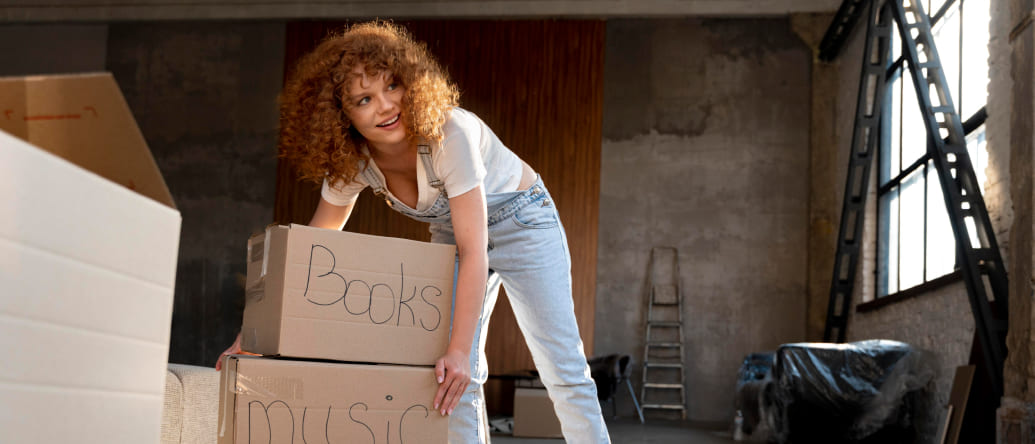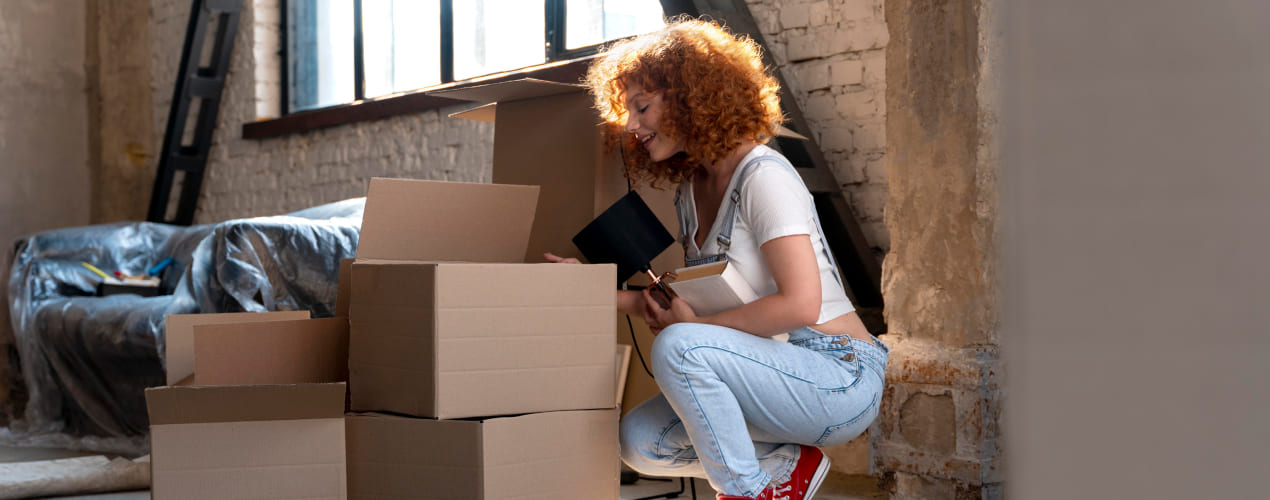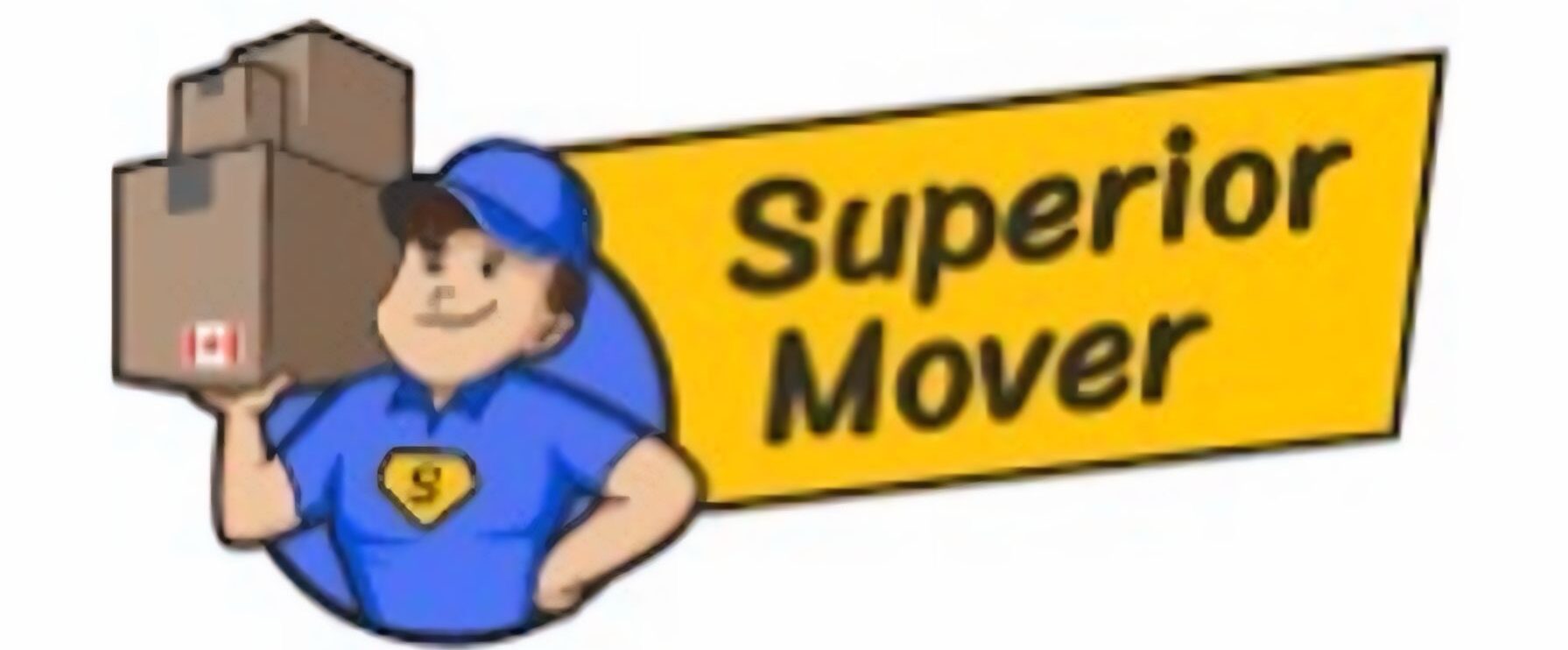
Long-Distance Moving Checklist and Must-Do
The complete checklist for long-distance moving

Tasks to handle well before moving day
One of the most important long-distance moving tips and tricks is thorough preparation. When you’re planning to move, it’s important to lay a solid foundation to ensure that everything goes smoothly on a moving day and when you unpack in your new home. For this, create a schedule and sort your belongings. There are several main tasks to tackle before the moving truck arrives.
Create a moving timeline
Moving requires careful planning and organization. Before you dive into a detailed timetable, take note of these important tips to ensure that your preparations are as effective as possible:
- Start early
So, how to prepare for a long-distance move? Start planning as soon as you decide on the date of your move. The more time you have to organize, the less stressful the process will be. - Break it down
Divide your tasks into smaller, more manageable parts and set deadlines for each segment. For example, devote one week to sorting through your belongings, another to finding moving companies, and the third to starting to pack nonessentials. This method makes the process less cumbersome and provides clear milestones and progress monitoring, helping you not miss any important tasks. - Use technology
For long-distance moving checklists, consider using apps or digital calendars to keep track of tasks and deadlines. Tools like Google Calendar or Trello are excellent for setting reminders and can help you stay on top of what needs to be done each day. - Stay flexible
While having a plan is crucial, be prepared to adjust it as needed. Moving can be unpredictable, and flexibility will help you manage unexpected changes or challenges.
By using these tips, you will be better prepared for the complexities of organizing a move, ensuring a smoother transition to your new home.
Choose the right moving company
Since selecting a moving company can impact every aspect of your relocation experience, it’s important to choose wisely. The best way to move long distance is to hire a good company:
- Read reviews
Look at reviews on multiple platforms, such as Google and Yelp. Pay attention to comments about the company’s reliability, punctuality, care for belongings, and customer service. - Get estimates
Obtain quotes from at least three different companies. Most reputable movers offer a free estimate after conducting a virtual or in-person assessment of your belongings. Be wary of companies that provide estimates but need to see what you need to move. - Compare services and rates
Think about what is included in the services provided. Some companies may offer packing, temporary storage or special crating, which can be crucial depending on your needs. - Look for red flags
Beware of movers who ask for a large deposit before the move day or who have changed their company name in the past to avoid inspections. This can be a sign of less reliable operations.
By thoroughly checking out moving companies and choosing one with good reviews and transparent pricing policies, you can avoid many common moving problems. This attention to detail ensures that your belongings are in good hands and you can focus on other aspects of the move.
Declutter your home
Your long-distance move checklist should include decluttering. Cleaning is about reducing your workload and simplifying your life, and it’s also about starting fresh in your new home. Here’s how you can effectively declutter your home before your big move:
- Sorting system
Use a simple categorization system such as “Keep,” “Sell,” “Donate,” and “Trash.” This will help you organize items quickly and make decisions without second-guessing. - Sell items
For items in good condition that you no longer need, consider selling them. You can use online platforms like eBay or Facebook Marketplace. This can help offset some of your moving costs. - Donate
Donating items is a quick way to clean up your home and help those in need. Clothes, books and household items can be donated to local charities. Read the donation guidelines, as some items may not be accepted. - Dispose properly
Proper disposal is key for items that cannot be sold or donated. Check to see if your city has special rules for the disposal of electronics, hazardous materials and large furniture. - Ask for help
Decluttering can be a big job, so don’t hesitate to ask friends or family for help. They can offer a second opinion on what to keep and what to throw away and help move heavy items.
Decluttering can be emotionally and physically draining, but if you are moving long-distance and follow these tips, you can greatly simplify your upcoming move. This will make the move cheaper and easier and give you a sense of accomplishment and a fresh start in your new home.
Essential packing tips for your long-distance moving

When it comes to long-distance moving, packing is not just about putting things in boxes. It’s an art form that, when done right, can make the move much easier and protect your belongings from bumps in the road. Here are practical tips that will not only help you pack efficiently but also ensure that your belongings arrive at your new home in the same condition as you left them:
- Get quality supplies
Invest in sturdy boxes, packing tape, bubble wrap and markers. Consider specialized containers for things like pottery or clothes. - Pack room by room
Packing tips for long-distance moving include tackling one room at a time. This method allows you to categorize and label boxes more efficiently, simplifying unpacking at your new home. - The heaviest items on the bottom
Start with the heaviest items at the bottom of the box and layer lighter items on top. This balance helps prevent boxes from becoming top-heavy and tipping over or crushing under their weight. - Fill gaps
Use soft items such as towels, blankets, or crumpled packing paper to fill empty spaces within boxes. This padding reduces the movement of contents during transport, which can prevent damage. - Wrap fragile items individually
Take the time to wrap each fragile item individually. This extra layer of protection can make the difference between a cherished item arriving in one piece or in several pieces. - Essentials box
How to pack clothes and other essential things for moving long distance? Identify items you’ll need immediately upon arrival — such as toiletries, medications, a few changes of clothes, and basic kitchen items — and pack them in a clearly labelled “essentials” box. This box should be loaded last and unloaded first.
Following these packing strategies helps ensure that your belongings are well-protected throughout the journey and that your move is as smooth and stress-free as possible.
Moving day: key tasks for a smooth long-distance relocation
The moving day can be hectic, but with a detailed checklist, you can ensure everything goes smoothly. Here’s what to include on your checklist to keep this day organized and stress-free:
- Confirm details with movers
Start the day by confirming the arrival time and details with your moving company. Ensure they have the correct address and contact information for your old and new homes. - Prepare an essentials box
If you haven’t already, pack an essentials box that contains everything you need for the first 24 hours in your new home. This includes items like toiletries, medications, important documents, chargers, snacks, and a change of clothes. Keep this box with you rather than in the moving truck. - Protect your property
Before the movers arrive, take some time to protect the floors and walls in your current home, especially in high-traffic areas. Use old blankets, drop cloths, or plastic sheeting to cover the floors and cardboard or corner guards to protect wall corners from scuffs. - Keep valuable items with you
Keep valuable items like jewelry, small electronics, and important papers with you. It’s safer to transport these sensitive items in your vehicle. - Final walkthrough
Once everything is loaded onto the truck, do a final walkthrough of your old home. Check closets, drawers, and storage areas for any items that may have been overlooked. - Clear pathways
Ensure that the movers clear all paths of debris, tools, or other hazards to facilitate a smooth and safe move.
By following this checklist, you can help ensure that moving day proceeds without a hitch, and you can focus on settling into your new home. Remember, preparation is key to reducing stress during a move!
Post-move checklist: steps to settle into your new home seamlessly
Unpacking and setting up your new home can seem overwhelming, but with a strategic approach, you can make the process smoother and more enjoyable. Here’s how to handle the unpacking stage effectively:
- Prioritize rooms
Start with the rooms that are most important to your daily life. Usually, this means that the kitchen and bedrooms are the first places to go. These rooms’ functionality will help you feel at home in your new home and maintain a normal rhythm of life during the move. - Gradual unpacking
After the essentials, move on to the less critical items such as decorative items, books, and other non-essentials. Unpack these items over time as you start to feel more settled. - Organize as you go
When unpacking, try to put things in their designated places. This will reduce the need for further reorganization and help you avoid clutter. Take this opportunity to optimize your new space to suit your current lifestyle and preferences. - Keep inventory
When unpacking, check that everything is on your inventory list. This will ensure that everything is delivered safely and allow you to quickly identify if anything is missing or damaged so that you can report it to the movers or insurance company. - Break down boxes
As you empty boxes, break them down and recycle or store them for future use. Keeping your space clear of clutter will help maintain order and progress. - Decorating
Once the essentials are unpacked, start planning the décor. Hang pictures, arrange furniture, and add personal touches that make the space feel like yours. - Take breaks and settle in
Remember to take breaks and don’t rush through the installation. Explore your new neighbourhood, take walks, and get to know your neighbours. Combining unpacking with relaxing activities can make the transition less stressful and more enjoyable.
By approaching the unpacking process methodically and prioritizing effectively, you can reduce anxiety and quickly turn your new home into a cozy, welcoming place. This strategic approach simplifies the task and helps you to develop a positive and fulfilling start in your new environment.






